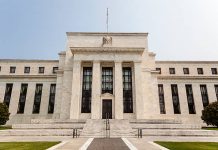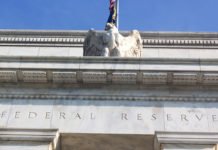Market movers today
As markets continue to keep a close eye on clinical trial results of COVID-19 drugs, a wealth of important events awaits us in the euro area today: Q1 GDP figures will give us some insight in the magnitude of the economic damage in the early stages of the outbreak and we look for a contraction of around 2% q/q. Unemployment figures for the euro area (March) and Germany (April) will show how successful short-term working schemes have been so far in stemming job losses.
The April HICP figures are set to give a gloomy reading. We expect headline inflation to have dropped to a mere 0.1%, down from 0.7% in March, as falling energy prices and discounts take their toll. Surging food price inflation and imputed prices used for services such as package holidays may mitigate this somewhat, though.
At today’s ECB meeting we expect policymakers to stay put after the various new policy measures announced lately. However, new policy responses cannot be ruled out as the ECB seems to be the only game in town near term and we think Lagarde and co will signal their readiness to act (see ECB Preview: The only game in town, 24 April).
US focus remains on the weekly initial jobless claims, after 26 million Americans have lost their jobs over the past five weeks on the back of the coronavirus crisis.
Unemployment figures are released in Norway (April) and Denmark (March).
Selected market news
Equities had a strong run in both the US and Asian sessions, US treasury yields rose a few bp and oil continued to recover after Gilead confirmed positive news about its COVID-19 treatment drug and the Fed signalled its willingness to continue to support the economy. After positive news on Gilead’s Remdesivir emerged on Wednesday, the US National Institute of Allergy and Infectious Diseases (NIAD) confirmed that the drug led to a significantly faster recovery and somewhat lower mortality rates in treated COVID-19 patients relative to the control group. The study is the first placebo-controlled trial and the constructive outcome is thus very positive news in forming a basis for treating COVID-19. The US is now looking to seek approval of the drug for emergency use. While the recent study is only a first indication of the treatment effect – and notably questions regarding approval, production and distribution remain unanswered – it does seem to have potential to ‘flatten curves’ of severely ill patients.
Separately, the Fed last night hinted that it is happy with the target range at 0.00-0.25%. The Fed did not change its forward guidance and stressed that it will be ‘patient’ and ‘in no hurry’ to hike. Fed chair Powell also highlighted that the Fed is likely to do more. We think the Fed will keep rates at the current level at least through 2021 and, as such, current (almost flat) market pricing seems fair, which Powell also hinted at himself. With rates at the effective lower bound and a very flexible QE programme, new measures would likely take the form of changes to existing liquidity facilities, or new ones. There had been some speculation that the Fed could announce a specific amount, but notably that did not happen. In our view, this is quite positive, as the open-ended nature of QE shows Fed’s commitment to support the economy.













